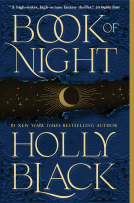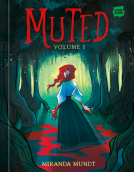
The Waiting
by Keum Suk Gendry-Kim
This title was previously available on NetGalley and is now archived.
Send NetGalley books directly to your Kindle or Kindle app
1
To read on a Kindle or Kindle app, please add kindle@netgalley.com as an approved email address to receive files in your Amazon account. Click here for step-by-step instructions.
2
Also find your Kindle email address within your Amazon account, and enter it here.
Pub Date Nov 02 2021 | Archive Date Nov 02 2021
Drawn & Quarterly | Drawn and Quarterly
Talking about this book? Use #TheWaiting #NetGalley. More hashtag tips!
Description
The story begins with a mother's confession...sisters permanently separated by a border during the Korean War
Keum Suk Gendry-Kim was an adult when her mother revealed a family secret: She had been separated from her sister during the Korean War. It’s not an uncommon story—the peninsula was split across the 38th parallel, dividing one country into two. As many fled violence in the north, not everyone was able to make it south. Her mother’s story inspired Gendry-Kim to begin interviewing her and other Koreans separated by the war; that research fueled a deeply resonant graphic novel.
The Waiting is the fictional story of Gwija, told by her novelist daughter Jina. When Gwija was 17 years old, after hearing that the Japanese were seizing unmarried girls, her family married her in a hurry to a man she didn't know. Japan fell, Korea gained its independence, and the couple started a family. But peace didn’t come. The young family of four fled south. On the road, while breastfeeding and changing her daughter, Gwija was separated from her husband and son.
Then seventy years passed. Seventy years of waiting. Gwija is now an elderly woman and Jina can’t stop thinking about the promise she made to help find her brother.
Expertly translated from the Korean by the award-winning translator Janet Hong, The Waiting is the devastating followup to Gendry-Kim’s Grass, which appeared on best of the year lists from the New York Times, The Guardian, Library Journal, and more.
Advance Praise
“How can black and white drawings do this, you might ask. But maybe only black and white drawings can do this— Gendry-Kim offers us here a glimpse of the heart of a woman who has lost more than some might ever find, and who has never given up her love, if not her hope. The Waiting is a stunning achievement, and a testament to the power of her artistry. Not a line or word feels out of place.”—Alexander Chee, author of How to Write An Autobiographical Novel
“The Waiting is a moving, beautifully drawn, masterfully told reflection on how history imposes itself, scatters people, and leaves so many lives unresolved.”—Joe Sacco, author of Palestine
Available Editions
| EDITION | Other Format |
| ISBN | 9781770464575 |
| PRICE | $24.95 (USD) |
| PAGES | 248 |
Featured Reviews
The thought of never knowing where a loved one is or what happened to them has always been, in my mind, one of the worst things you can live through.
The Waiting is a work of fiction but based on some real accounts (a work of fiction to be respectful of real-life people's stories). Beginning with one woman's life as the war begins, a domino effect that results in the division of Korea -making north and south Korea. It was painful to see how so many families were torn apart and lost that even decades later, with the program from the Red Cross, some answers were never going to be answered.
 Librarian 240691
Librarian 240691
Powerful and moving, this fictionalized account of families separated between North and South Korea is strikingly illustrated. The black and white images capture the setting, passage of time, and the stark differences between war, the refugee experience, and modern life. Gendry-Kim's notes at the end of the work provide even more insight into the separations experienced by many Korean families.
 Althea G, Librarian
Althea G, Librarian
This book is so tragic and beautiful. Despite the matter-of-fact way the text is delivered the story is quite heartbreaking. The author did a great job of showing her love for her mother as well her struggles communicating with her due to differences in culture/generation. I really like how the book puts you in the same emotional position of the characters, uncertain of the future. The ink illustrations are quite lovely.
 Mary B, Librarian
Mary B, Librarian
"The Waiting" by Keum Suk Gendry-Kim, is a story without an ending. How can it have an ending when there are still so many Korean families, separated by war, who know nothing of what became of their loved ones? Biographical in nature, Gendry-Kim did not use her own family story, or the exact stories of others she'd interviewed, for fear or reprisal to those still living under the North Korean regime.
Through flashbacks, Gwija tells the story of how her mother was separated from her husband and son as the North Koreans fled South to avoid the war. The story of her exodus is like that of many others, fleeing in chaos and confusion, relying on the kindness of others for food and shelter, encountering death and destruction along the way, surviving to eek out a living in a new place as refugees, forming a new family while unable to forget the old.
Another important aspect of Gwija's story is the challenge and guilt of caring for an elderly parent while trying to live one's own life. Although she is not an only child, as the only single daughter, much of the care of her mother has fallen to her, although her married brother lives nearby. The culture of male dominance in the culture is evident in the favoritism shown sons over daughters. Gwija feels tremendous guilt about her inability to locate her mother's first husband and their son. Her feelings are intensified as she is forced to move away from the neighborhood and further away from her mother.
So, like so many others, Gwija's mother continues to wait to hear about what happened to her husband and son. And like so many others, she will likely pass away before finding out anything. The bleakness of their situation is highlighted by Gendry-Kim's stark black-and-white artwork.
Appropriate for 7th grade students and up looking for historical fiction or titles about family dynamics and/or Korean culture.
 Rae H, Librarian
Rae H, Librarian
An exceptional yet heart-wrenchingly personal account of The Korean War. Gendry-Kim uses her genius to remind us that the effects of the war and bifurcation of the Korean identity are an everyday reality for many. I will remember this tale for the rest of my life.
Even those this story is fictional, it is based on personal accounts. It is a very eye-opening and educational story. It blows my mind how many families were separated because of the Korean War, and so many of them will never know the fate of their family members. Whether you are close with your family or not, this story will make you reflect on that.
Keum Seuk-Gendry Kim breaks my heart every. Single. Time. I was first introduced to her beautiful work in the graphic novel memoir, Grass, she created about Korean women who were forced into sexual slavery by the Japanese military during WWII. It was an incredibly powerful memoir, and this fictional graphic memoir of Korean families divided by the Korean War and the separation of the North and South, based on the stories of her mother, Grandmother Lee and Grandfather Kim, is just as riveting.
The artwork in this story, like in Grass, is black and white, stark and mostly quiet. Then there will be a striking moment where the details of a single tree will make you catch your breath and hover.
I see this story as an important one for anyone trying to understand the real life human impact of a separated Korea and the lived experience of the Korean War, or anyone who enjoys stories that look at significant historical events through the lens of an everyday individual’s experience. I would also recommend it to high school students studying 20th century Asian history, to put a face to the dates, places and people they’re studying.
It’s also just a heartbreaking look at family relationships, adult children and aging parents.
While I can’t comment on the accuracy of the translation, my feeling is that Janet Hong did an excellent job. I appreciated the inclusion of some Korean words and phrases as well as the subtle notes to include some background/contextual information.
Thank you to NetGalley, Drawn and Quarterly, Keum Seuk-Gendry Kim and Janet Hong this ARC in return for my honest review, but also just for the reading experience.
 Librarian 778782
Librarian 778782
* I received an eARC/e-galley of this book via Netgalley. All opinions in this review are my own.
This book was moving and heartwarming and heartbreaking at the same time. This graphic novel follows one woman's story of the Korean War and how she was separated from loved ones. I'm not a big reader of war novels but given this was a chance and I was so glad I did. The focus of the story was not on the war at all but how people were separated from loved ones while evacuating the North. The story was told with present and past experiences being intertwined which helped to land the sweetness of moments as well as the sadness. While this story is a work of fiction you can tell the author paid careful attention to make it seem so real and believable. It was obvious the writer did some nice research about the war and the reunification process and how that affected loved ones. The art style was also very nice and the pacing of panels were used well to emphasize moments and evoke emotional responses. I highly recommend this book!
 Librarian 784227
Librarian 784227
"The Waiting" is a fictionalized account of the author's mother's journey from North Korea to South Korea during the Korean war and the family she has left behind. The illustrations are beautifully done and perfectly convey the fear and uncertainty of a family attempting to survive wartime in Korea. The story starts in modern day Korea in the neighborhood where the author and her mother live, where the daughter is forced to move a distance out of the city due to rising rents. Then the mother's tale of her family's attempts to outlast a series of wars and occupation in Northern Korea, a marriage of convenience, motherhood, and then the long road to Southern Korea. Along the way, the family is separated and unable to find one another, leading to descriptions of the attempts of NGOs to reunite family members separated into what is now two separate and solidly divided nations. The story is a reminder of the families that are still unable to communicate and left to wonder about the fate of their family members 60 years later, and an attempt to bring attention to the sadness still felt by the families affected by the Korean War and to show them compassion and kindness.
Readers who liked this book also liked:
Silvia Moreno-Garcia
Historical Fiction, Literary Fiction, Sci Fi & Fantasy
Naoya Matsumoto; Keiji Ando
Comics, Graphic Novels, Manga, Sci Fi & Fantasy


















